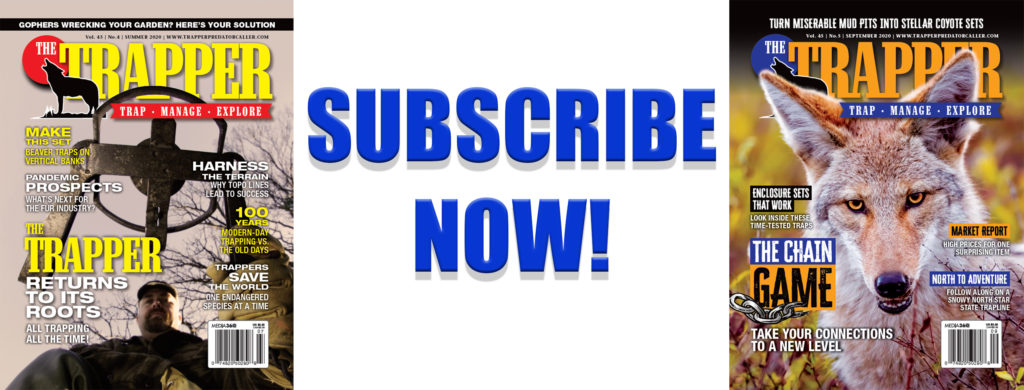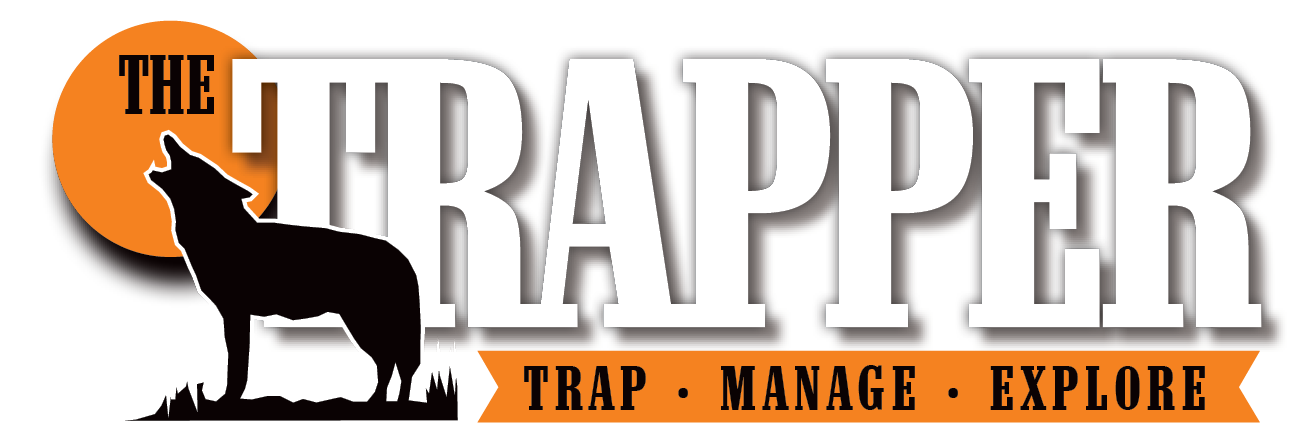The year 2020 is finally over and for many people, it will be a year to forget. The COVID-19 pandemic spread quickly in March of 2020, and we are now basically one year later and still trying to overcome this invisible enemy. Travel bans, mask wearing in public spaces, closed businesses, virtual classes in school, canceled concerts and sports events, the list of anti-pandemic measures goes on and on.
Luckily for most of us, trapping was still an option, and it was a fantastic activity when you could hardly do anything indoors anyway. Being alone in the woods, driving across fields, climbing down the bank to check water traps, or canoeing slowly along a winding river, trapping was, maybe more than ever, an activity to keep us safe AND sane!
It felt good to go into the fur shed with critters to handle, and the feel of fur was probably as precious as it ever was. Trapping is much more than a profit-driven venture, and this year’s pandemic surely reveled the true therapeutic value of being outdoors.
The economic conditions of the fur market during the last few years also lessened competition is some areas, so many trappers had the woods to themselves, seeing little competition on public land or at popular culverts. The decrease in fur prices that started in 2013 has dampened spirits of those trappers seeking rapid profits. But, the trappers that have remained active have enjoyed possibly higher furbearer populations and definitely less competition. Remember, we need to be able to see and appreciate the good things in these difficult times.
Harvest season is now mostly over except for spring beavers and muskrats. When the harvest season closes, selling season is at its peak, normally. This year, fur buying is a much more cautious proposition. Most countries around the world are still busy battling COVID-19 in one form or another, and consumers are still hesitant to spend on luxury goods in the face of all of the uncertainty that prevails.
Globally, the trade is also trying to swallow up millions of ranch mink that are being culled because of COVID-19 infections on farms in Denmark and also recently in Poland. In Europe, the ranch mink industry is at its weakest point in history, and the antis in Brussels are taking advantage of the situation by pushing for fur-farming bans at the political level for the entire European Union.
Negative press and the flooding of the ranch mink offering, on top of all of the skins that remain unsold from past years, means that ranch mink prices will struggle yet again this year, and the impact will spill over to the wild fur world.
For us trappers, not much has changed market-wise and you can probably expect prices to drop 10% to 20% compared to last year. Any species that resembles ranch mink, such as wild mink, muskrat, beaver, river otter, marten and even fisher will sell at modest prices, and expect the very low grades to be either difficult to sell at all, or bring almost nothing.
The only good money in water species right now is castoreum, which sells at $70 to $80 a pound for the best grades, often causing large beavers to bring more for their glands than for their skin. Learn to handle castor well, do not over-dry them, and find your profit there. Beaver meat is also becoming more and more popular as human food, or in some areas as bear bait or food for dog sled teams. Investigate the potential that exists in your area and find a market for the meat. Use the intestines and organs for bait to draws canids or fishers to your sets, but do not waste the stuff that sells well.
Long-hair skins continue to have a niche in the trim trade for parka hoods, wrist cuffs, neck cuffs, etc. But even that market will soften up some this year. In the last sales of 2020, we saw a softening of the coyote market by probably 20%, with Western coyotes still holding out extremely well, but any other not-so-perfect coyote dropping in price. Eastern coyotes are on their way to their usual price range of $20 to $30 on average, while Westerns should still near the $100 mark.
Western bobcats will also sell well, simply because that market is so small and luxurious. Canada lynx, however, will remain low, but nowhere near as tough to sell as red foxes, a species with a very difficult market right now at $10 to $15 per skin.
We all love trapping raccoons, they are abundant, fun to catch, and they look great in the fur shed, but their market will not motivate many trappers for just $5 to $12 each. Again, blue pelts, small animals or skins with damage are likely to remain unsold. Speculation right now is a risky business because of the ongoing downward trend of the market.
The next international sale of wild fur will capture all of the industry eyes and it will be held in North Bay, Ontario, Canada, on April 9-13, 2021. Held by Fur Harvesters Auction (www.furharvesters.com), the only wild fur auction house remaining in the world, this sale will hopefully move a lot of fresh goods and unsold skins from past years. Of course, for this sale to reach its full potential, international buyers must be able to travel and attend — and it is difficult to predict how global mobility will be influenced by access to COVID vaccines by then.
We’ll cross our fingers and hope that enough buyers attend to kickstart a recovery that is long overdue, and finally put an end to one of the longest valleys of low fur prices that our trade has ever experienced.



